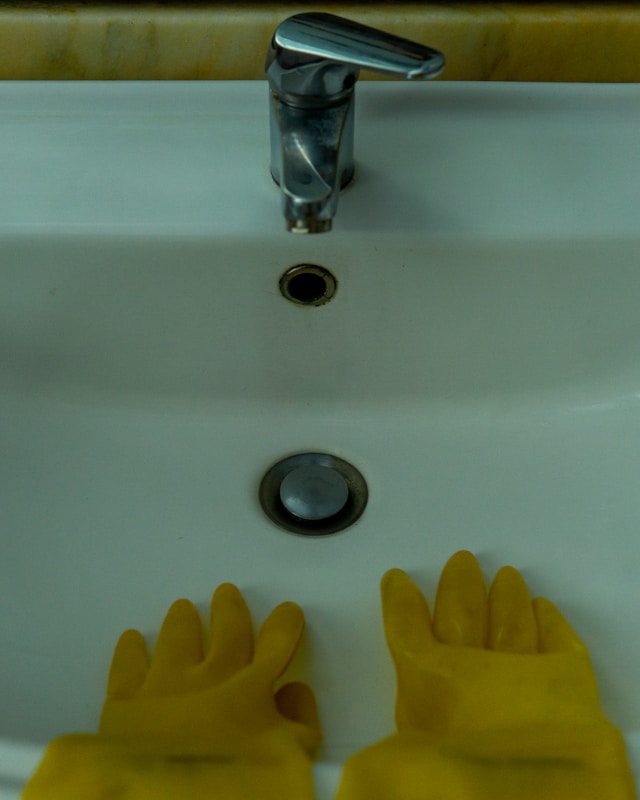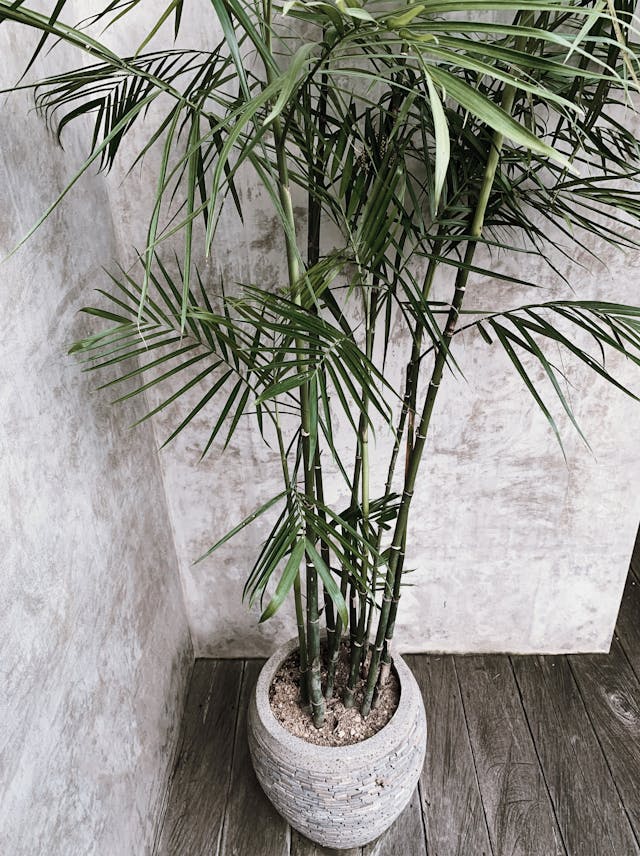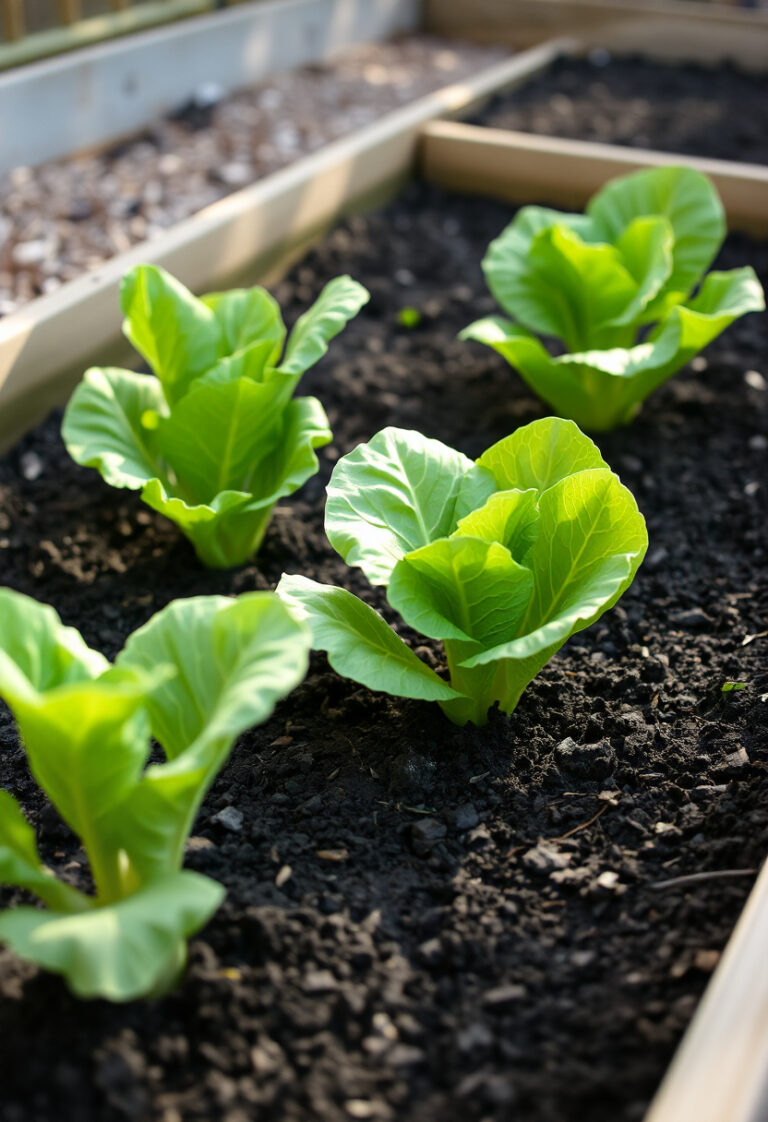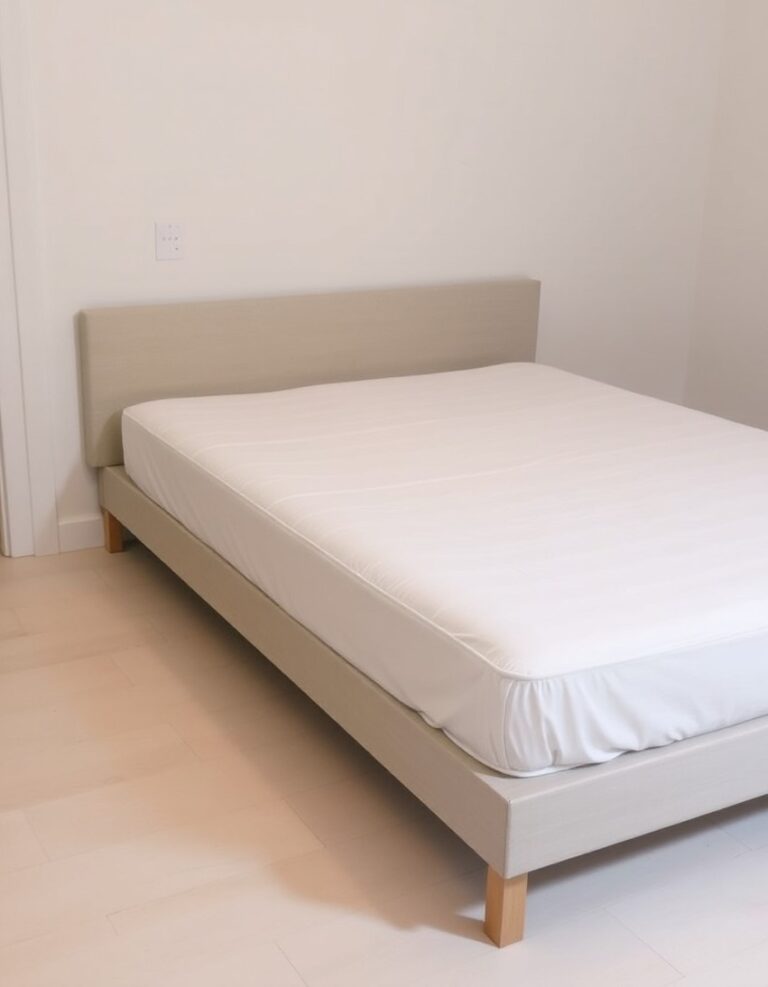Rose-covered trellises serve as functional garden structures that combine vertical growing space with natural beauty. These climbing supports allow roses to reach their full potential while creating attractive focal points in outdoor spaces. Whether you’re working with a small patio or expansive garden, implementing the right trellis design can maximize your growing area and establish beautiful vertical displays.
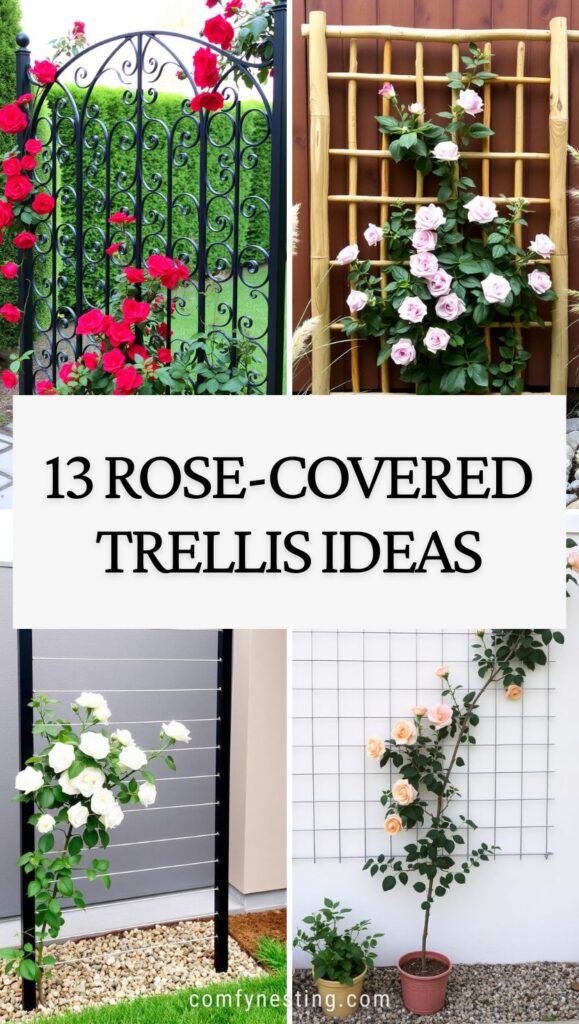
Understanding Rose Trellis Fundamentals
Before exploring specific designs, understanding the basics of rose-covered trellises ensures successful implementation. Most climbing roses require sturdy support structures that can handle mature vine weight, which often exceeds 20-30 pounds per plant. The trellis must provide adequate spacing between slats or wires to allow proper air circulation, preventing common fungal diseases that affect roses.
Material selection plays a crucial role in trellis longevity. Cedar and redwood naturally resist rot and insects, making them excellent choices for long-term installations. Metal options like galvanized steel or powder-coated aluminum offer durability but may require periodic maintenance to prevent rust in humid climates.
1. Classic Wooden Lattice Trellises
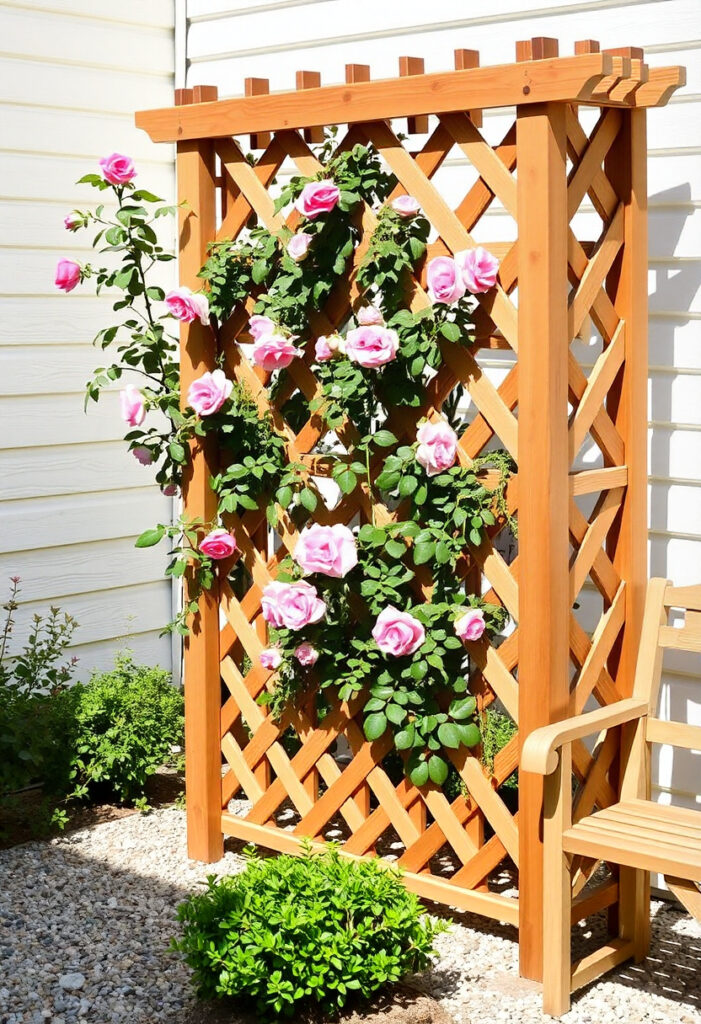
Traditional wooden lattice remains one of the most popular choices for rose-covered trellises. These structures feature intersecting wooden slats arranged in diamond or square patterns, providing multiple attachment points for climbing roses. The spacing between slats typically ranges from 4-6 inches, allowing roses to weave naturally through the openings.
Construction tips: Use pressure-treated lumber for ground contact points and apply wood preservative annually. Install the trellis at least 6 inches from walls or fences to ensure proper air circulation behind the roses.
2. Wrought Iron Decorative Panels
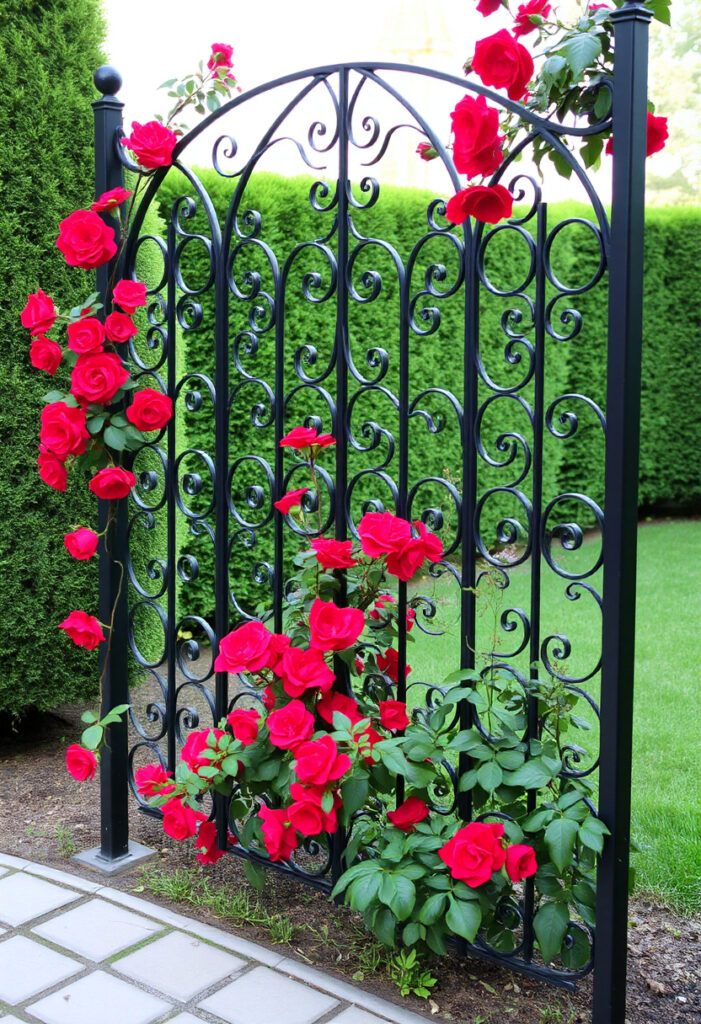
Wrought iron trellises offer exceptional durability and sophisticated aesthetics. These metal structures withstand harsh weather conditions while providing intricate patterns that complement rose blooms. The rose-covered trellises made from wrought iron typically feature curved elements, scrollwork, or geometric designs that serve as decorative elements even before plants mature.
Maintenance considerations: Apply rust-resistant primer and paint every 3-4 years. Install rubber or plastic guards where metal contacts plant stems to prevent damage during high winds.
3. Wire Grid Systems
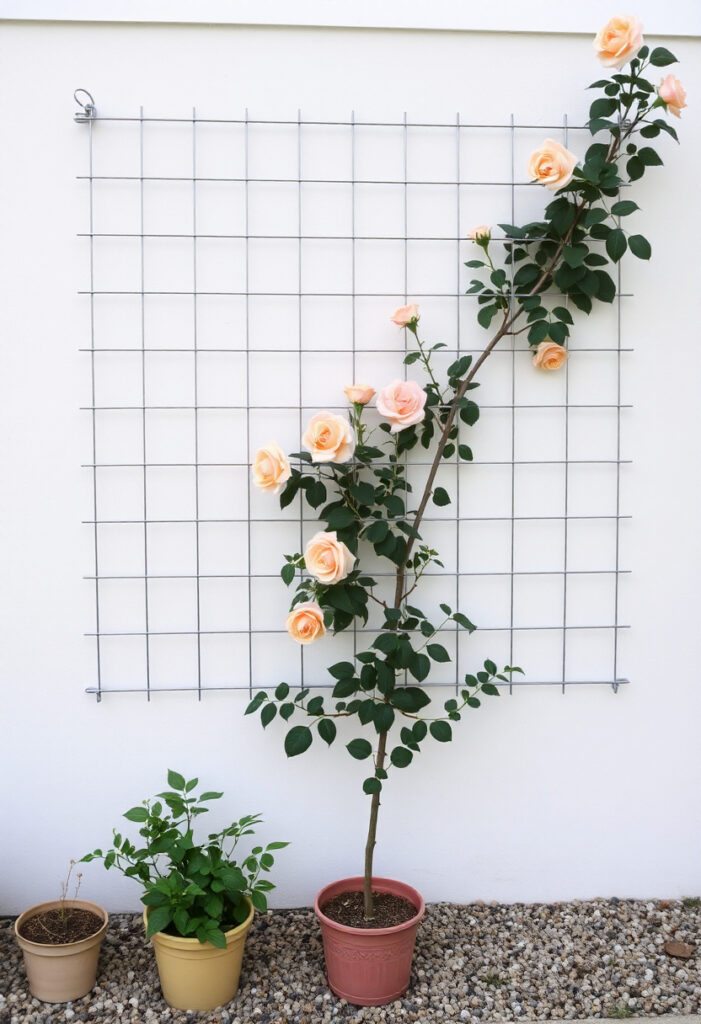
Simple wire grid systems provide cost-effective solutions for rose-covered trellises. These minimalist structures use galvanized wire or cable arranged in grid patterns, offering roses plenty of attachment points without overwhelming the garden design. Wire systems work particularly well for modern garden settings where clean lines are preferred.
Installation method: Stretch horizontal wires every 12-18 inches between sturdy posts, then add vertical wires at similar intervals. Use turnbuckles to maintain proper tension as the system ages.
4. Bamboo Panel Trellises
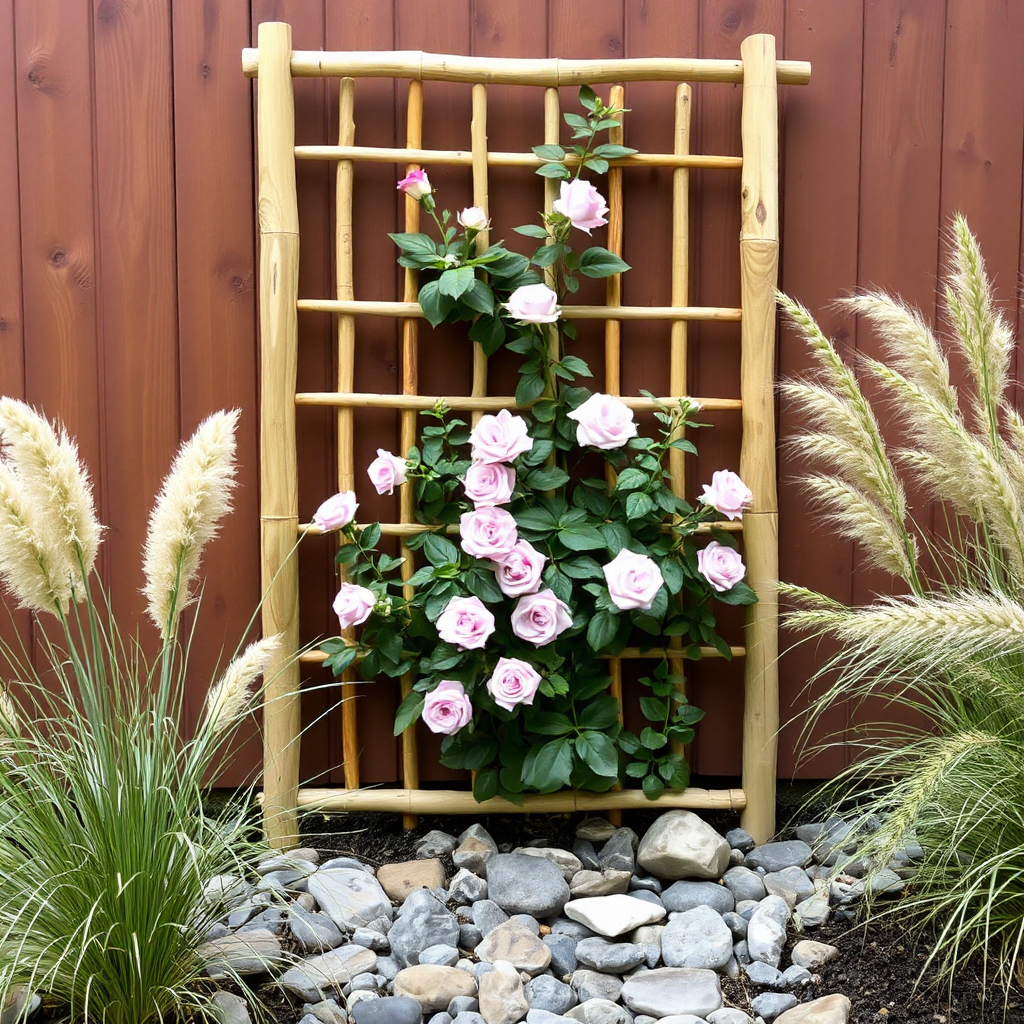
Sustainable bamboo creates excellent rose-covered trellises that blend naturally with garden environments. Bamboo panels offer flexibility in size and configuration while providing adequate support for most climbing rose varieties. These structures work especially well in Asian-inspired garden designs or eco-conscious landscapes.
Durability factors: Choose bamboo panels treated for outdoor use and expect replacement every 5-7 years depending on climate conditions. Regular application of bamboo sealant extends lifespan significantly.
5. Obelisk Tower Designs
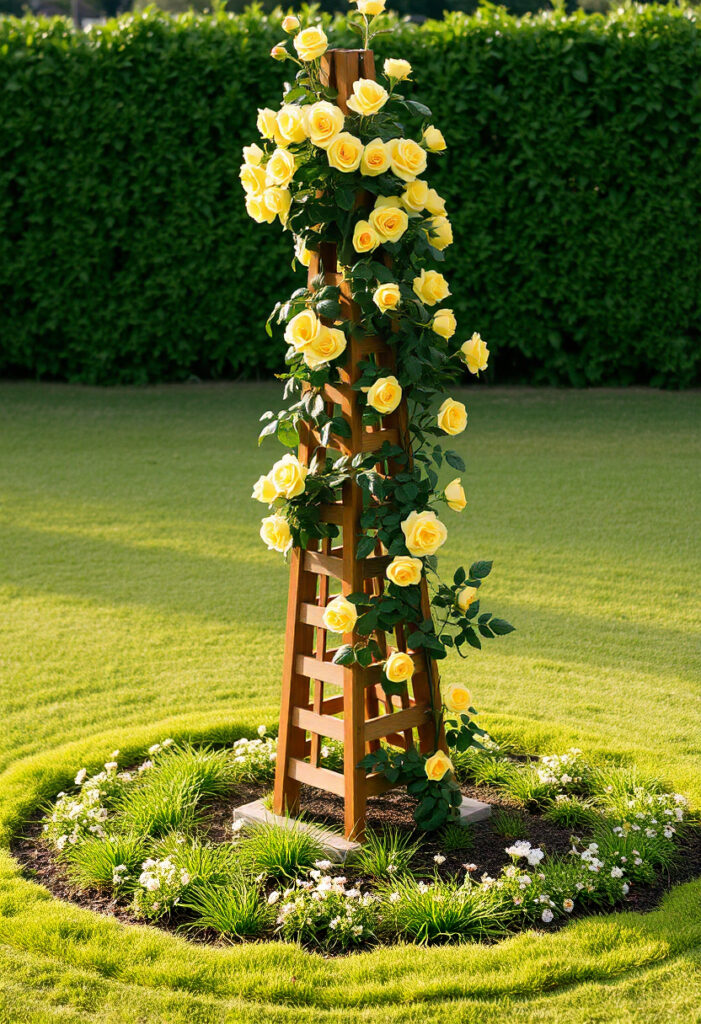
Tall obelisk-style rose-covered trellises create dramatic vertical elements in garden spaces. These pyramid-shaped structures typically range from 6-8 feet in height, providing ample climbing space for vigorous rose varieties. Obelisks work well as standalone features or when arranged in groups for larger displays.
Design specifications: Build obelisk trellises with a base width of 18-24 inches, tapering to 6-8 inches at the top. Use diagonal bracing between vertical supports to ensure structural stability.
6. Arched Walkway Trellises
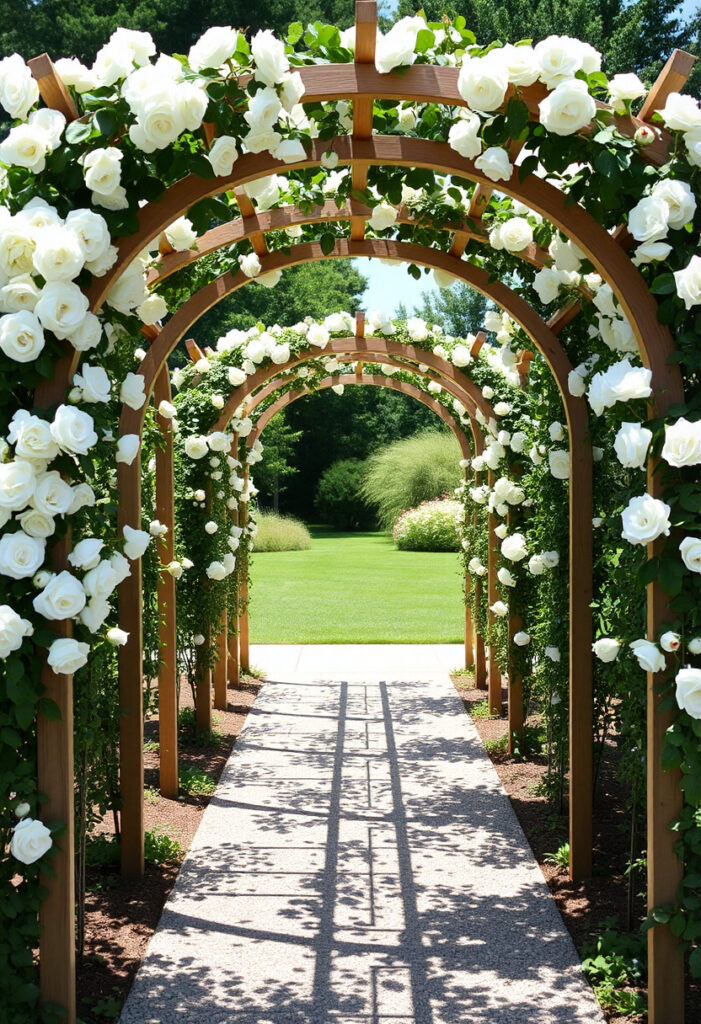
Arched rose-covered trellises create stunning garden passages that invite exploration while maximizing vertical growing space. These structures require careful planning to ensure adequate headroom (minimum 7 feet) while providing secure rose support. Multiple arches can be connected to form extended walkways.
Construction requirements: Use pressure-treated lumber or galvanized steel for arch construction. Ensure footings extend below frost line in cold climates to prevent heaving and structural damage.
7. Fan-Shaped Wall Mounts
Wall-mounted fan trellises offer space-efficient solutions for rose-covered trellises in smaller gardens. These structures attach directly to walls or fences, spreading outward in fan patterns that accommodate natural rose growth habits. Fan trellises work particularly well for espaliered roses or compact climbing varieties.
Installation guidelines: Mount fan trellises with adequate spacing from walls to prevent moisture buildup. Use galvanized hardware rated for outdoor exposure and check mounting security annually.
8. Modular Panel Systems
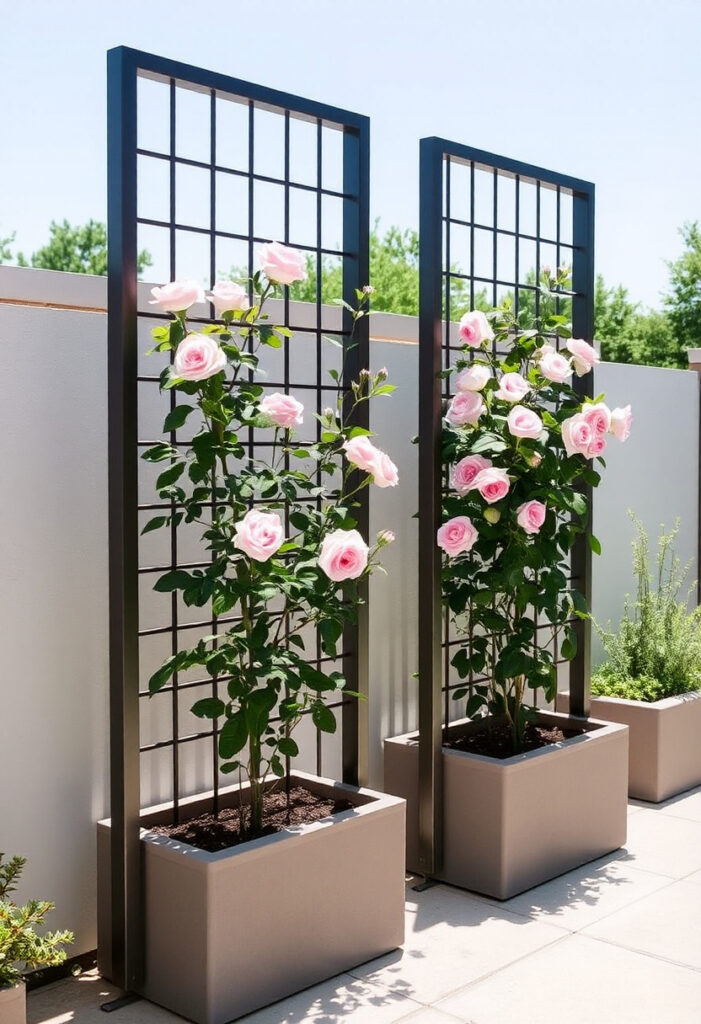
Modular rose-covered trellises provide flexibility for changing garden layouts. These systems use standardized panels that connect together, allowing gardeners to adjust configurations as plants mature or garden needs change. Modular systems work well for renters or gardeners who frequently redesign spaces.
Configuration options: Standard panels typically measure 2×6 feet or 3×6 feet, allowing various combinations. Use heavy-duty hinges or brackets for connections that withstand wind loads.
9. Copper Pipe Frameworks
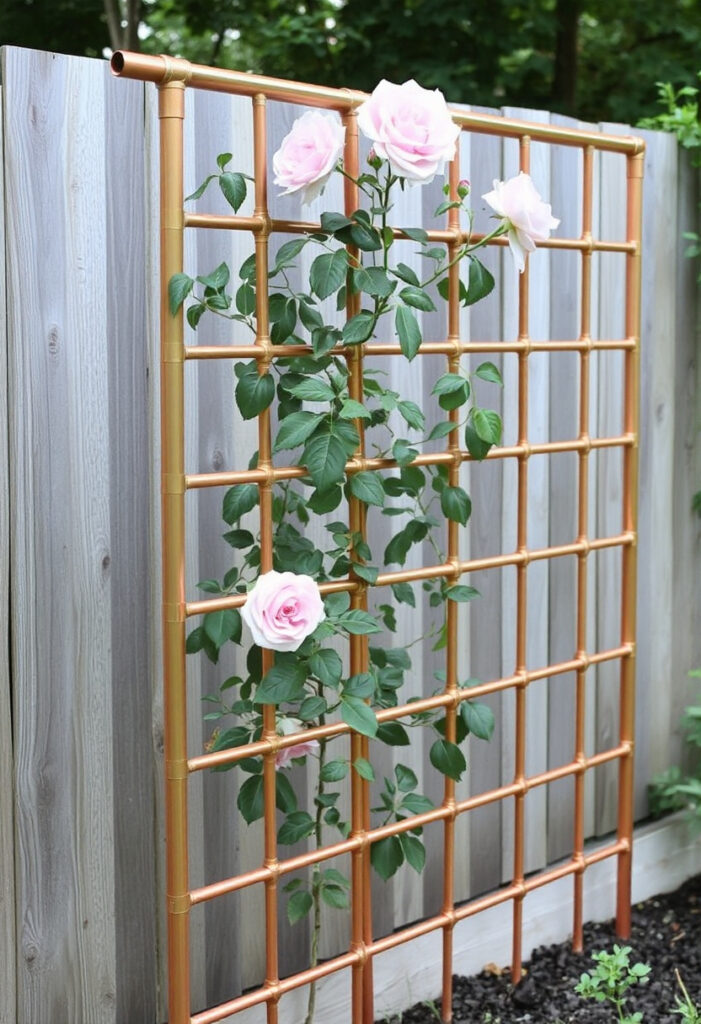
Copper pipe systems create durable rose-covered trellises with distinctive appearance that develops natural patina over time. These structures offer excellent corrosion resistance and can be configured in countless designs using standard plumbing fittings.
Assembly considerations: Use lead-free solder for all joints and install grounding connections where required by local codes. Allow copper to weather naturally or apply patina solutions for immediate color development.
10. Tensioned Cable Systems
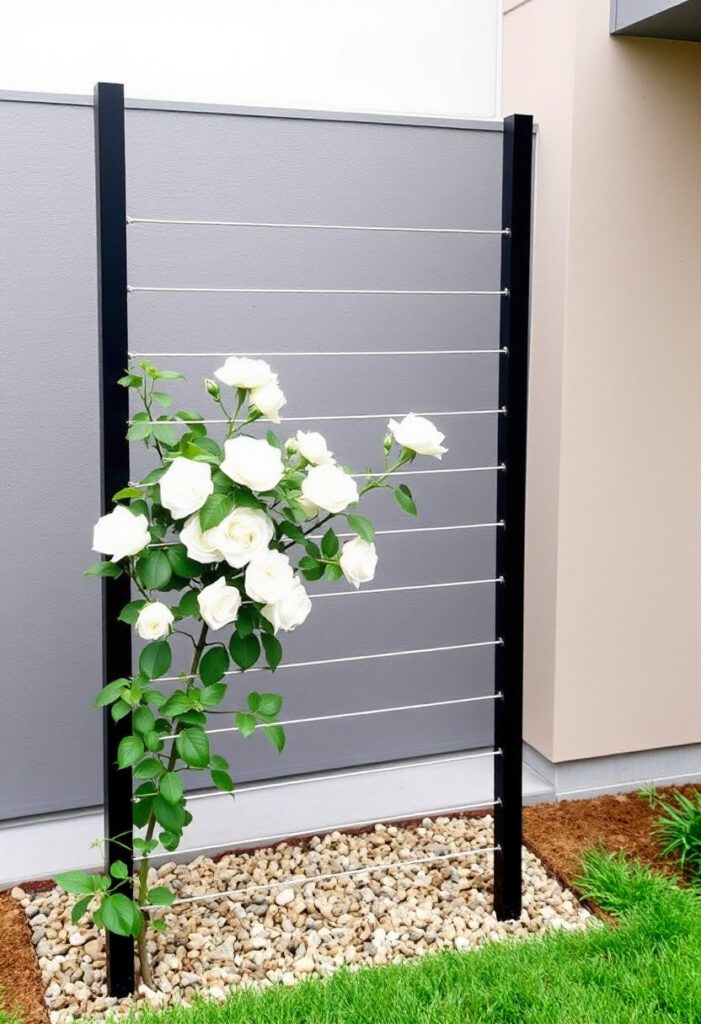
Modern tensioned cable rose-covered trellises provide minimalist support that virtually disappears once roses mature. These systems use stainless steel cables stretched between posts, creating horizontal or diagonal growing surfaces. Cable systems work exceptionally well for contemporary garden designs.
Technical specifications: Use 1/8-inch to 3/16-inch stainless steel cable with appropriate tensioning hardware. Install cables at 12-18 inch intervals and re-tension annually to maintain proper support.
11. Pergola-Integrated Designs
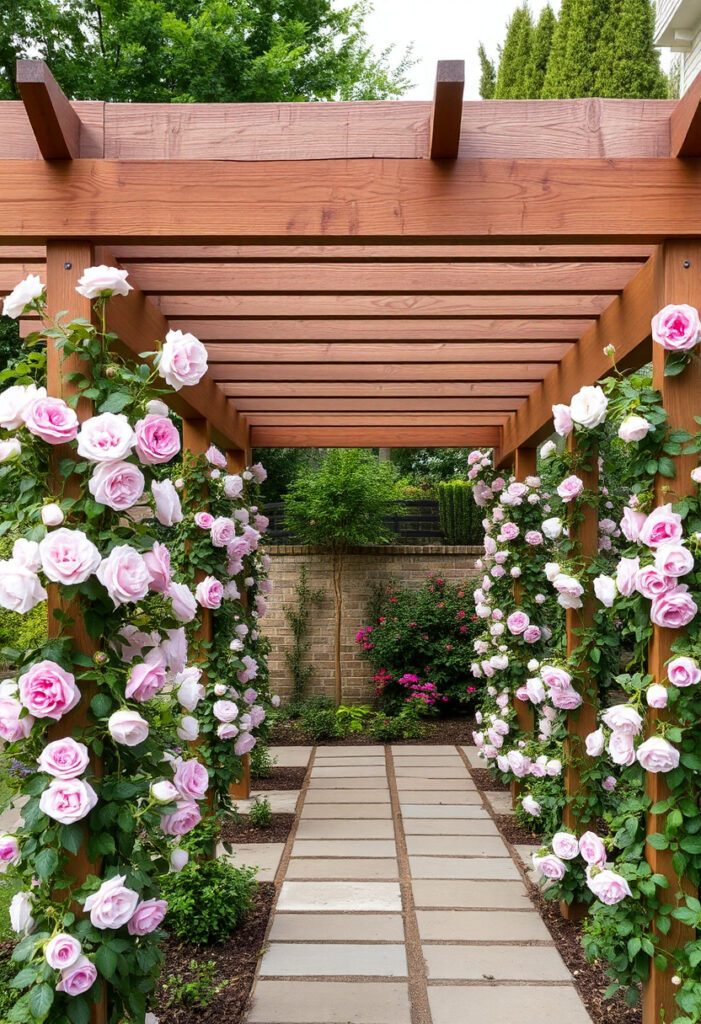
Integrating rose-covered trellises into pergola structures creates multi-functional garden features that provide both plant support and overhead coverage. These designs work well for dining areas or seating spaces where roses can provide seasonal shade and fragrance.
Structural requirements: Ensure pergola posts are sized appropriately for combined loads of structure, roses, and wind forces. Use galvanized hardware throughout and consider local building code requirements.
12. Vertical Garden Walls
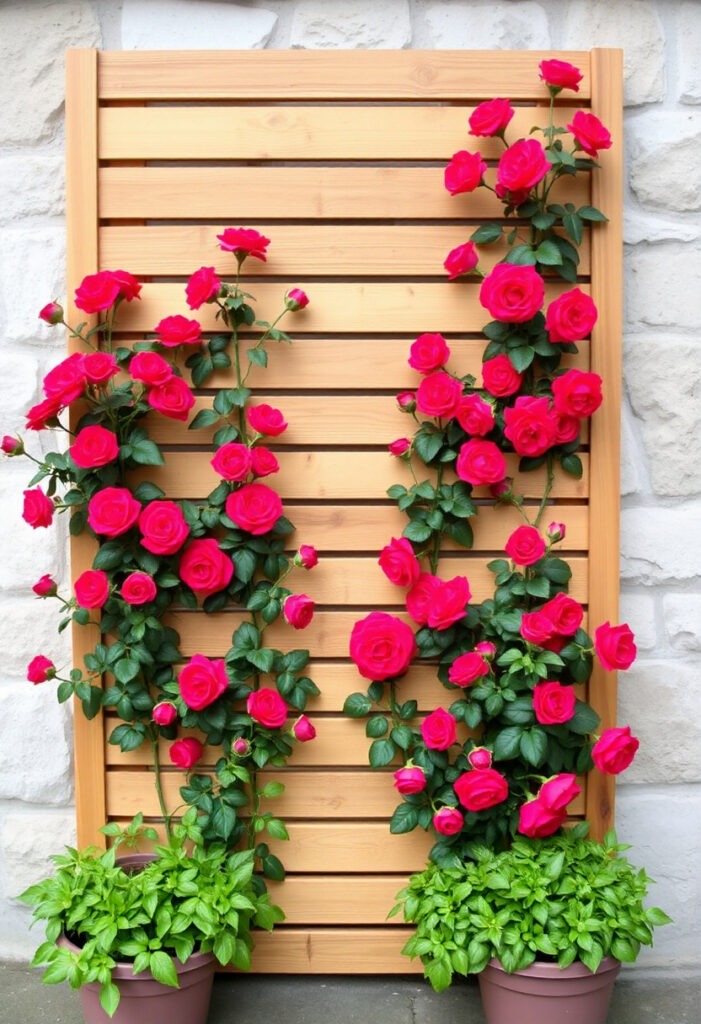
Vertical wall systems create rose-covered trellises that maximize growing space in minimal footprint areas. These structures use closely spaced horizontal supports that allow roses to create dense, wall-like plantings. Vertical walls work well for privacy screening or hiding unsightly features.
Spacing guidelines: Install horizontal supports every 8-12 inches vertically with adequate depth for rose root development. Provide irrigation systems for plants at different heights to ensure consistent moisture.
13. Spiral Tower Configurations
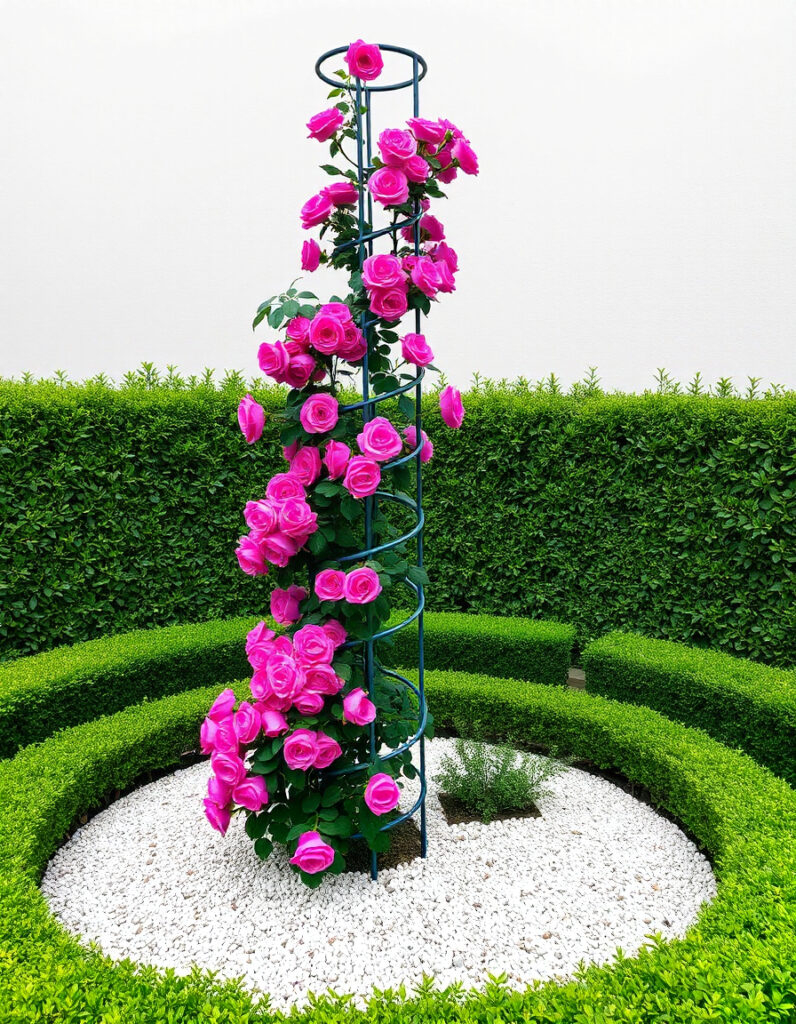
Spiral rose-covered trellises offer unique three-dimensional growing surfaces that showcase roses from multiple angles. These structures typically use metal frameworks with spiral wire or slat arrangements, allowing roses to climb in helical patterns around central supports.
Design considerations: Maintain spiral pitch that accommodates rose growth patterns, typically 12-18 inches per complete rotation. Ensure structural stability with adequate foundation support.
Installation and Maintenance Guidelines
Successful rose-covered trellises require proper installation techniques and ongoing maintenance. Begin by preparing the planting area with well-draining soil amended with compost. Install trellis structures before planting roses to avoid root damage during construction.
Foundation requirements vary by trellis type but generally require concrete footings for structures over 6 feet tall or in areas with high wind exposure. Use galvanized hardware throughout and check all connections annually for wear or corrosion.
Regular maintenance includes pruning roses to prevent structural overload, checking support connections, and applying protective finishes to wooden or metal components. Most rose-covered trellises benefit from annual inspections and minor repairs to ensure continued structural integrity.
Seasonal Care and Management
Rose-covered trellises require seasonal attention to maintain both plant health and structural integrity. Spring tasks include pruning, fertilizing, and checking trellis connections after winter weather. Summer maintenance focuses on watering, deadheading, and monitoring for pest issues.
Fall preparation involves reducing watering, applying winter protection in cold climates, and securing loose trellis elements before winter storms. Winter care includes monitoring for ice damage and planning any necessary repairs or modifications for the following season.
Questions & Answers
Q: How far apart should I space the slats on my rose trellis? A: Space slats 4-6 inches apart for optimal rose climbing support. This spacing allows roses to weave naturally through openings while providing adequate air circulation to prevent fungal diseases.
Q: What’s the minimum height for a rose trellis? A: Most climbing roses require trellises at least 6-8 feet tall to accommodate their mature growth. Vigorous varieties may need structures up to 12 feet tall for full development.
Q: Can I install a rose trellis after planting roses? A: While possible, it’s much easier to install trellises before planting to avoid disturbing root systems. If installing after planting, work carefully around established roots and add soil amendments as needed.
Q: How deep should trellis posts be buried? A: Bury trellis posts at least one-third of their above-ground height, with a minimum depth of 2 feet. In areas with freeze-thaw cycles, extend footings below the frost line.
Q: What’s the best material for rose trellises in humid climates? A: Cedar, redwood, or treated metal materials perform best in humid conditions. Avoid untreated softwoods that rot quickly in high moisture environments.
Q: How often should I replace wooden rose trellises? A: Well-maintained cedar or redwood trellises typically last 10-15 years. Pressure-treated lumber may last 8-12 years depending on local climate conditions and maintenance practices.
Q: Can I grow roses on existing fences or walls? A: Yes, but ensure adequate spacing (6-8 inches) between roses and solid surfaces for air circulation. Add horizontal supports to existing structures to provide proper climbing points for rose canes.

